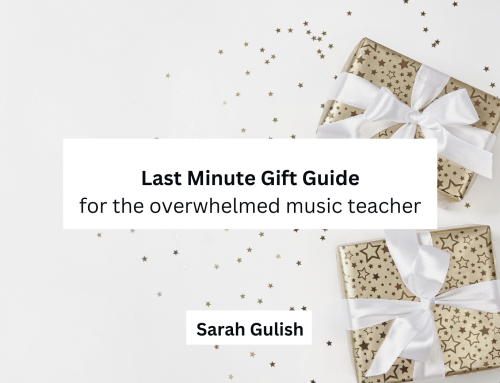Welcome to The Asterisk*, a new regular column where we’ll chat about diversity, equity, inclusion, and accessibility in music education. An asterisk’s function is to quickly give readers a baseline of knowledge so the reader can dive into content. This column aims to introduce or refresh deia concepts in a judgment-free space and provide ideas for incorporating deia principles into your teaching practice.
Table of Contents
Today’s Topic: Representation (Part 1)
Representation in schools means that students can see themselves in their teachers, administrators, and curriculum. Although usually centered on racial differences, representation is important for all marginalized student groups.
According to a 2018 Pew Research report, People of Color make up only 20% of US educators, meaning that black and brown children are overwhelmingly taught cross-culturally by white teachers. White teachers can be very effective, but all children need to see people in leadership roles that look like them. Needless to say, attracting and retaining teachers of color needs to be addressed on a national scale. Meanwhile, one-way white teachers can make students of color feel seen is by showcasing (and hiring, when possible!) black and brown (and more) artists and works.
Today’s Tip: Diversify your Visual Aids
This is a straightforward idea that you could put into practice today: upgrade your visuals so that they better represent your student population.
Here are a few ideas to get you thinking:
Zoom Waiting Room message ~ for anyone teaching virtually
I love to change up my Zoom message. I always include some sort of self-care advice to help students prepare themselves for class. To complement that, I like to acknowledge important cultural events. Currently, my Zoom Waiting Room headline says: “Happy Black History Month! Black Lives Matter.” This is a simple statement, but it reminds students that the Black Lives Matter movement is something I believe and stand for every time they come to class.
“Our Solfege Chart”~ for the choir teacher
Take photos of your students doing Curwen hand signs/solfege signs and create a solfege chart using their hands. Other options: Find a multicultural bundle from Teachers Pay Teachers or make your own chart using (stock) hands from the internet.
Listening Journal~ for the general music teacher
Expose students to musicians of color and provide them with the opportunity to analyze and discuss their work.
Check out the Middle School Sample Listening Journal here. Use the down-arrow to scroll through sample songs and questions. (Original template from slidesmania.com)
Zoom Interviews~ as a cross-curricular project
Invite POC musicians to speak with your students. Have students create thoughtful questions together.
ASL for note identification~ as a fast, silent way to have students answer questions
Teach your students the letters A-G in American Sign Language (ASL). Use sign language to have students quickly indicate note names during games, activities, and discussions. (We love this one – it has inspired some great conversations about ability as well.) Sample slides here.
What about you? How do you incorporate deia principles into your classroom?




Leave A Comment